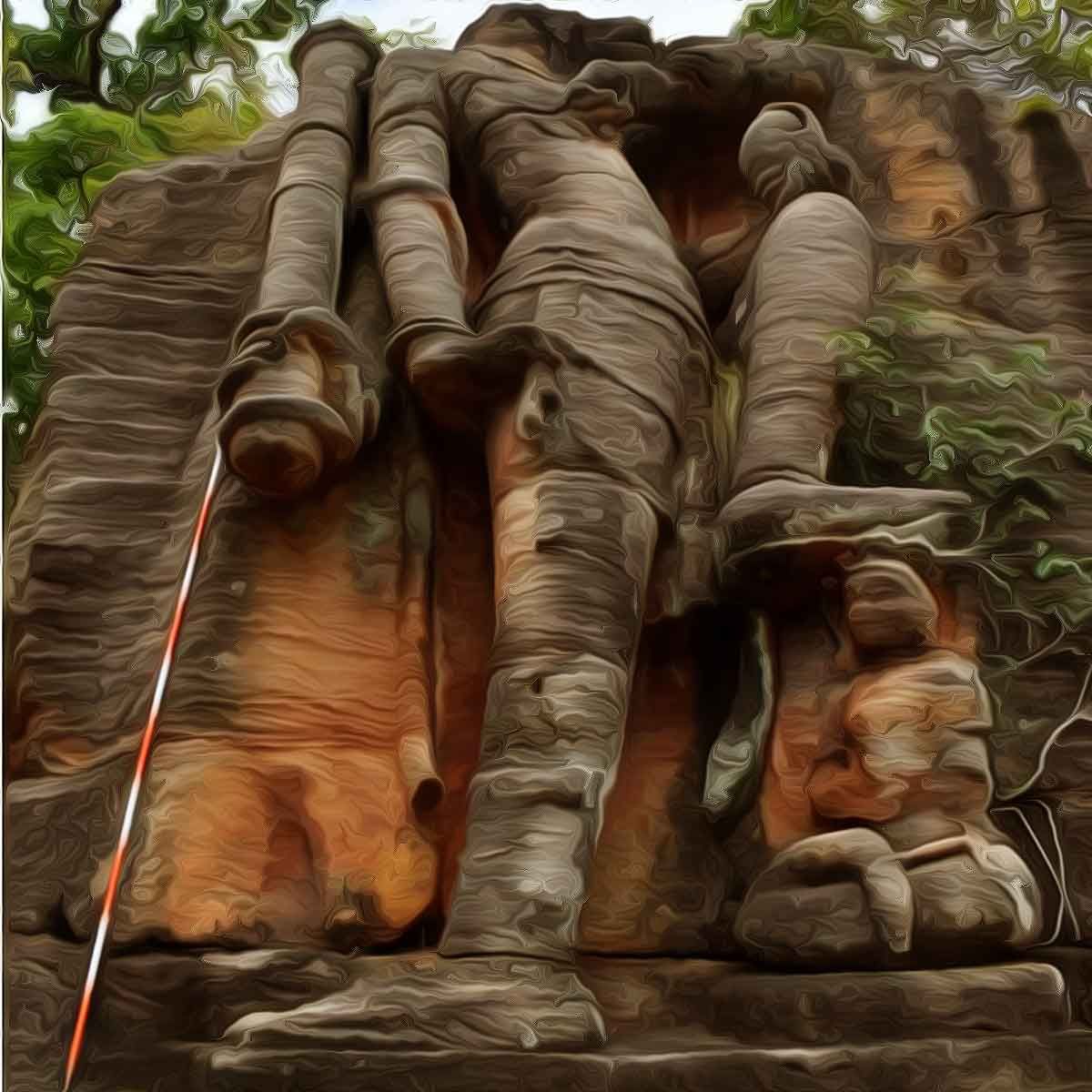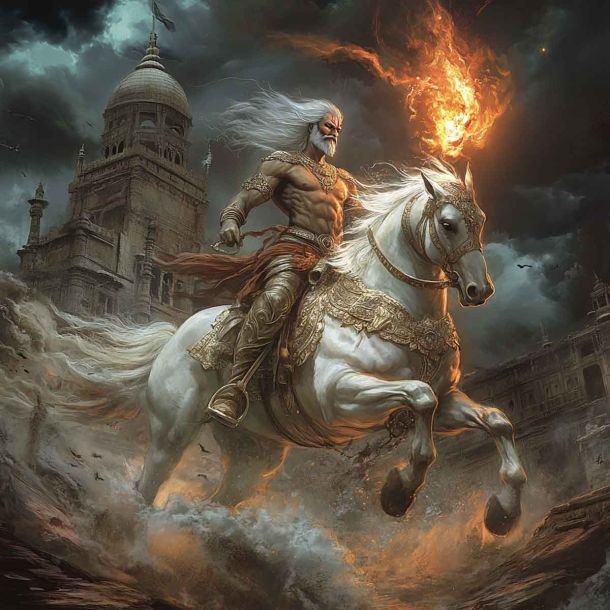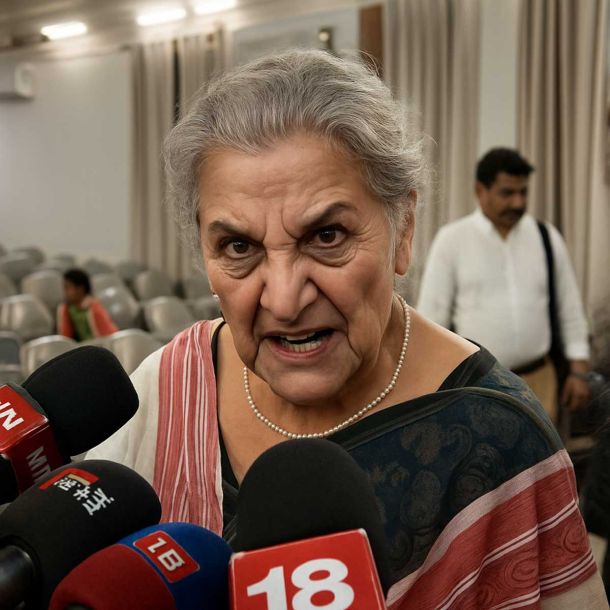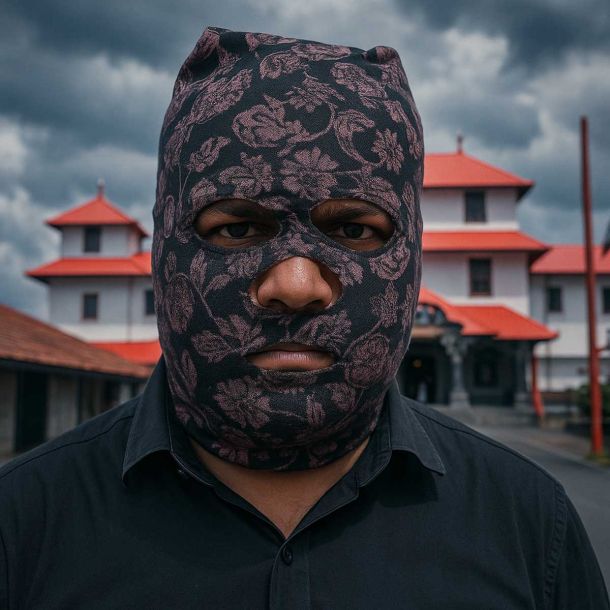More Coverage
Twitter Coverage
Satyaagrah
Written on
Satyaagrah
Written on
Satyaagrah
Written on
Satyaagrah
Written on
Satyaagrah
Written on
Join Satyaagrah Social Media
"सत्यमेवेश्वरो लोके सत्यं पद्माश्रिता सदा, सत्यमूलानि सर्वाणि सत्यान्नास्ति परं पदम्": Indian archaeologists found a treasure — ancient and historic caves, temples, Buddhist structures, sculptures, coins and water bodies etc in Bandhavgarh Tiger Reserve

Known for its large and varied biodiversity including majestic tigers, more than 250 species of birds, 37 species of mammals, 80 species of butterflies and a large number of reptiles, the Bandhavgarh Tiger Reserve located in Madhya Pradesh’s Umaria district has revealed yet another type of treasure trove — ancient and historic caves, temples, Buddhist structures, maths, sculptures, coins, water bodies and mural inscriptions in old scripts like Brahmi and Nagari.
|
Reporting on this major find, the Archaeological Survey of India’s Jabalpur Circle informed that during the exploration 26 temples, 26 caves, two monasteries, two votive stupas, 24 inscriptions, 46 sculptures, other scattered remains, and 19 water structures were recorded.
The ASI team included 10 officers from the Jabalpur Circle and two Forest Department officials and they made these significant discoveries during their exploration conducted from May 20 to June 27, 2022.
This first major exploration was undertaken in 1938 and covered an area of 170 sq. kilometers.
Many ancient sculptures, including large monolithic sculptures of various avatars of Lord Vishnu like ‘Varaha’ and ‘Matsya’, and “board games made in natural `”, were reported. Sharing details about them, Dr. Shivakant Bajpai, Superintending Archaeologist, ASI Jabalpur who led the team observed: “This is an important exploration and documentation to know about the rich culture of Baghelkhand A large Varaha sculpture measuring 6.4×5.03×2.77 meter of 9th–13th century CE is found. It appears to be the world’s largest sculpture.”
|
Baghelkhand refers to the northeastern regions of Madhya Pradesh and south eastern Uttar Pradesh.
Most of the 26 caves that dated from the 2nd BC Century to the 5th Century AD belong to the Buddhists. Findings like chaitya-shaped doors and cells with stone beds pointed to the presence of the Mahayana sect of Buddhism. Talking about this Bajpai said: “The team found a Votive Stupa and a Buddhist pillar fragment containing miniature stupa carving. The votive stupas held the ashes of the monastic dead to be eternally in the presence of the Buddha Shakyamuni. These are roughly dated back to 2nd-3rd century CE.”
A total of 35 temples have been so far documented in the region – nine earlier and 26 temples or remains of temples of the Kalachuri period, that is from 9th to 11th Century CE, in the latest exploration. Two Saiva maths of that period were also found. Besides this, 19 water bodies; various quarry sites, and brick kilns were also discovered.
Brahmi inscriptions numbering 24 which belong from the 2nd to 5th Century AD too have been documented, the ASI informed. Inscriptions in Nagari and Shankhalipi were also found. The inscriptions mention names of places like Mathura, Kaushambi, Pavata or Parvata, Vejabharada, and Sepatanaairikaa. Also, names of notable kings like Maharaja Shri Bhimsena, Maharaja Pothasiri, and Maharaja Bhattadeva, were also mentioned.
|
“For me, the most startling finding is the remains of the Buddhist structures in the region where a Hindu dynasty ruled. It suggests religious harmony, but who built these Buddhist structures is not known yet,” remarked Bajpai.
Coins from the Mughal-era and Sharqi dynasty of Jaunpur Sultanate have also been found, Bajpai said.
Recalling the dangers faced during the exploration, Bajpai revealed: “Many times, we had to run away from the site due to the presence of wild animals. In Bandhavgarh, more than tigers, wild elephants created trouble for us but the forest officials supported us.”
References:
 Support Us
Support Us
Satyagraha was born from the heart of our land, with an undying aim to unveil the true essence of Bharat. It seeks to illuminate the hidden tales of our valiant freedom fighters and the rich chronicles that haven't yet sung their complete melody in the mainstream.
While platforms like NDTV and 'The Wire' effortlessly garner funds under the banner of safeguarding democracy, we at Satyagraha walk a different path. Our strength and resonance come from you. In this journey to weave a stronger Bharat, every little contribution amplifies our voice. Let's come together, contribute as you can, and champion the true spirit of our nation.
 |  |  |
| ICICI Bank of Satyaagrah | Razorpay Bank of Satyaagrah | PayPal Bank of Satyaagrah - For International Payments |
If all above doesn't work, then try the LINK below:
Please share the article on other platforms
DISCLAIMER: The author is solely responsible for the views expressed in this article. The author carries the responsibility for citing and/or licensing of images utilized within the text. The website also frequently uses non-commercial images for representational purposes only in line with the article. We are not responsible for the authenticity of such images. If some images have a copyright issue, we request the person/entity to contact us at This email address is being protected from spambots. You need JavaScript enabled to view it. and we will take the necessary actions to resolve the issue.
Related Articles
- "नमस्ते शारदे देवि काश्मीरपुर-वासिनि": Devi Sharada has returned to Kashmir - a historical center of India’s cultural, religious & academic heritage that was once Centre of knowledge where scholars across the country use to visit for spiritual knowledge
- Goa Inquisition and massacre of Native Hindus by Portuguese: A Forgotten Chapter of the Bloody History of the European Colonization of India
- DMK banned 500-year-old ritual of ‘Pattina Pravesam’ at Dharmapuram mutt in Tamil Nadu: Madhurai Adheenam claims threat to life after he accused MK Stalin-led govt of encroaching rights of Hindu temples
- Selling of alcohol, narcotics or meat banned around Sri Krishna Janmasthan Mandir in Mathura by Yogi Adityanath Govt: TOI raises Shahi Idgah issue and peddles sob stories, preparing the next cycle of outrage
- Chennakeshava temple in Belur kicks off 'Rathotsava festival' with Quran recitation: Earlier temple administration requested Muslims to vacate their shops, however, Govt gives their nod for non-Hindus to set up stalls throughout festival
- Kashi symbolizes the unshakeable plasticity and unity of Hindus - presence of Padmesvara stones and Padmesvara inscription in the Lal Darwaza mosque, attests further that Kashi’s Islamic monuments are built on temple remains
- SC urges Karnataka to resolve the Datta Peeta dispute, a Hindu site where Guru Dattatreya chanted Vedas, with 200 acres donated by Mysuru Wodeyars, controversially transferred to the Waqf Board in 1975 and now claimed as Baba Budan’s Dargah
- "All I have seen teaches me to trust the Creator for all I have not seen": Golu Devta, also known as justice god, an incarnation of Shiva is worshipped all over the Kumaon & Garhwal region to whom people write their applications on govt stamp paper
- Supreme Court allows same Muslim brothers to rent temple properties who have wrecked mayhem in Srisailam temple
- "कण कण शंकर": Fishermen in Gujarat discover a 140kg ancient orange crystal Shivling in their net, stunning the local community, this rare find, potentially dating back centuries, ignites spiritual fervor and debate over its rightful home in sacred temples
- In Bareilly, Akram, Shahrukh, and Arshad arrested for temple vandalism, while 35 others were detained following Hindu-Muslim clashes during Muharram, prompting bulldozer action against illegal property expansions amid severe communal tensions
- Bharatnatyam dancer Zakir Hussain, who was denied entry to Srirangam temple as per HR&CE rules drew a lot of commentary and advice to Hindus on secularism from the usual quarters: Found accused of several sexual misconducts
- Madras High Court: Do not take decision on melting Temple gold till Trustees are appointed
- Courage and devotion of the Jain father-son duo to the cause of reclaiming occupied Hindu sites is not talked about enough in popular discourse: Let's know more about Advocates Hari Shankar Jain and Vishnu Shankar Jain
- "कल्कि": Sambhal, the prophesied birthplace of Kalki Avatar, saw Harihar Mandir fall between Balban’s 1254 massacre and Sikandar Lodhi’s rule, as Carlleyle’s 1879 ASI report exposed temple remains beneath Shahi Jama Masjid, rewriting history
























